Fresh pasta is, without a doubt, the symbol of the immense Italian gastronomic heritage. In 2010, pasta was honored with the prestigious title of Intangible Cultural Heritage of Humanity by UNESCO. Each region of the boot is characterized by its own formats, which fill old and new recipe books.

Fresh Italian pasta: an endless love

While working the fresh pasta
The history of pasta spans the centuries, in an endless space-time journey, which documents how essential this sublime food is on our tables, in our lives.
The cult of Italian fresh pasta has its roots in the sumptuous gastronomic tradition of the country. With its soft texture and its unique and indescribable flavour, fresh Italian pasta is an enjoyment for the senses and a delight for food lovers – who delight in preparing it, as if to perform a ritual.
The history of Italian fresh pasta

The history of Italian homemade fresh pasta dates back to a few centuries ago. Italy was the first country in Europe to adopt pasta as a fundamental element of its cuisine. Initially thought of as an element of a poor course, given the simplicity of its ingredients, pasta quickly dominated Italian tables, following the Italians themselves around the world, among the continents gradually explored and populated by emigrants.
However, the first evidence to refer to the presence of fresh pasta in the diet and on Italian tables dates back to the 13th century; in this period, difficult to date exactly, Italian women began to make pasta, using only flour, water and salt.
Make your own fresh pasta from scratch in RomeThe lucky fate of fresh pasta
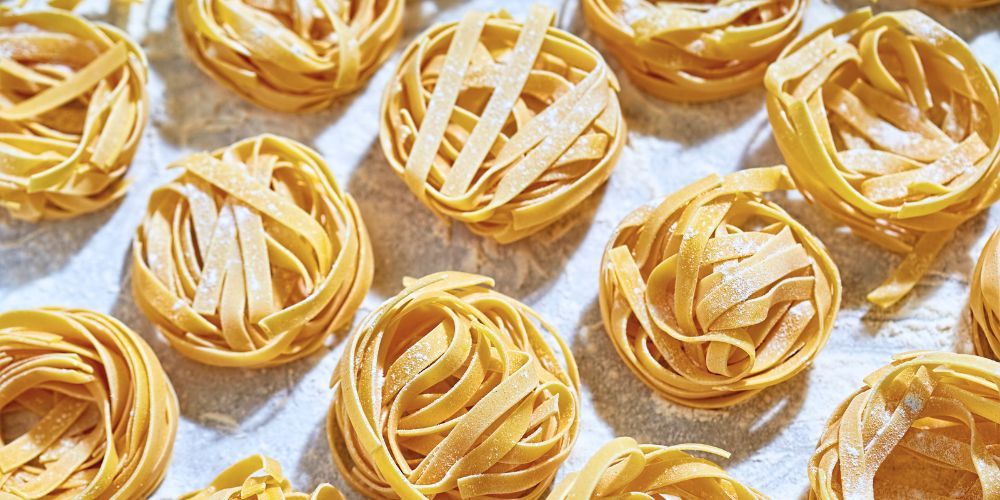
Italian fresh pasta
Over the centuries, homemade fresh pasta has been perfected and enriched with ingredients such as eggs, which have contributed to making it even more creamy and tasty; moreover, the recipe books of different formats have been increased.
Fresh pasta has been a real canvas, where everyone has been able to express their culinary art, right inside their own kitchen: broken, cut in various ways, filled and stuffed, fresh pasta knows no equal - and everyone is happier knowing that, among the courses of an opulent lunch, there will certainly be a plate of tagliatelle.
visit the Pasta museum in ParmaThe ingredients for a perfect fresh pasta
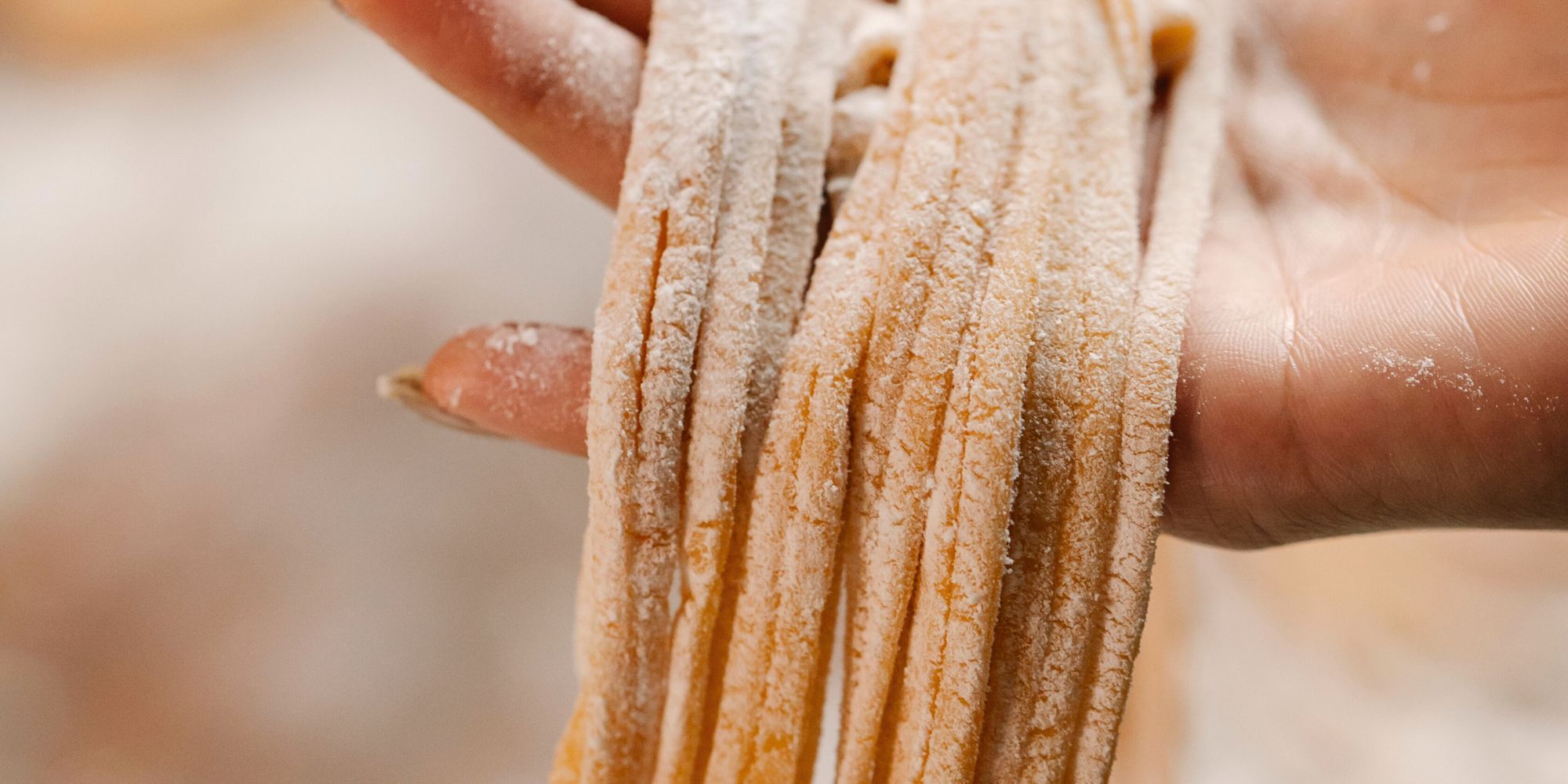
Some fresh fettuccine
To prepare fresh egg pasta we need:
- 4 eggs, possibly organic, 70 g each;
- 400 g of 00 flour;
- A pinch of salt.
Homemade Fresh pasta is made up of simple elements of excellent quality. Wheat flour, egg and a sprinkling of salt are the protagonists of the preparation of fresh pasta. After mixing the ingredients, the dough is rolled out thinly and cut into various shapes, such as tagliatelle, fettuccine, ravioli and tortellini. Fresh pasta is an art that requires patience and skill; the end result is a superior quality product that is celebrated for the unique texture and flavors with which it is dressed.
Learn to make tortellini and ravioli in RomeThe various stages of preparation
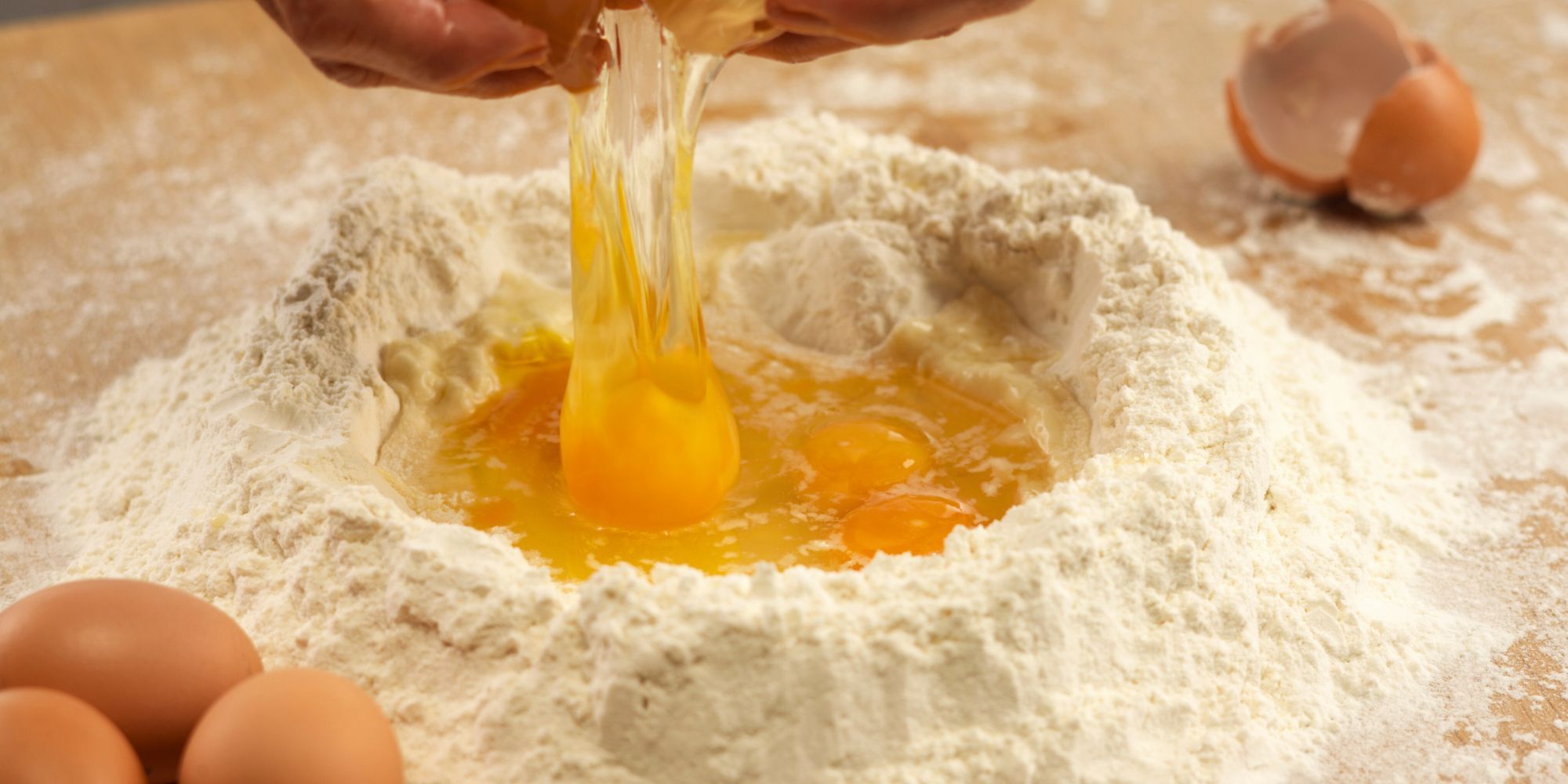
The first stages of preparing the dough
We begin the processing, so that we can have our fresh egg pasta ready in the blink of an eye.
To start, we pour just under 400 g of 00 flour on a wooden pastry board, thanks to which the porosity of the dough will be softer and more manageable. We create a hollow in the center of the flour and pour in two whole eggs; with the fork, we begin to mix the mixture inside the aforementioned hollow – slowly incorporating the flour.
Once the liquid part has been absorbed, we start working the dough with our hands; energetically, with the palm of our hands, let's help ourselves to spread the mixture well, pulling it far and wide and being careful not to tear it.
Once the dough is smooth, wrap it in cling film and let it rest at room temperature for about 30 minutes. Once the dough has been cut with the tarot, and the part that we will not use has been kept well, we proceed to roll the dough into the sheeter machine, until we obtain a thin sheet.
We will then lay this sheet, passed and passed again between the rollers on a lightly floured pastry board and with a tarot, or with a knife, we will finish the edges. We can also, preferably, divide the dough into two parts, so as to handle it more easily.
Our fresh egg pasta is ready and we can thus create the shape we prefer.
Experiment and learn about the various methods of preparing pasta in the enchanting RiomaggioreFresh pasta, walking around the Italian regions
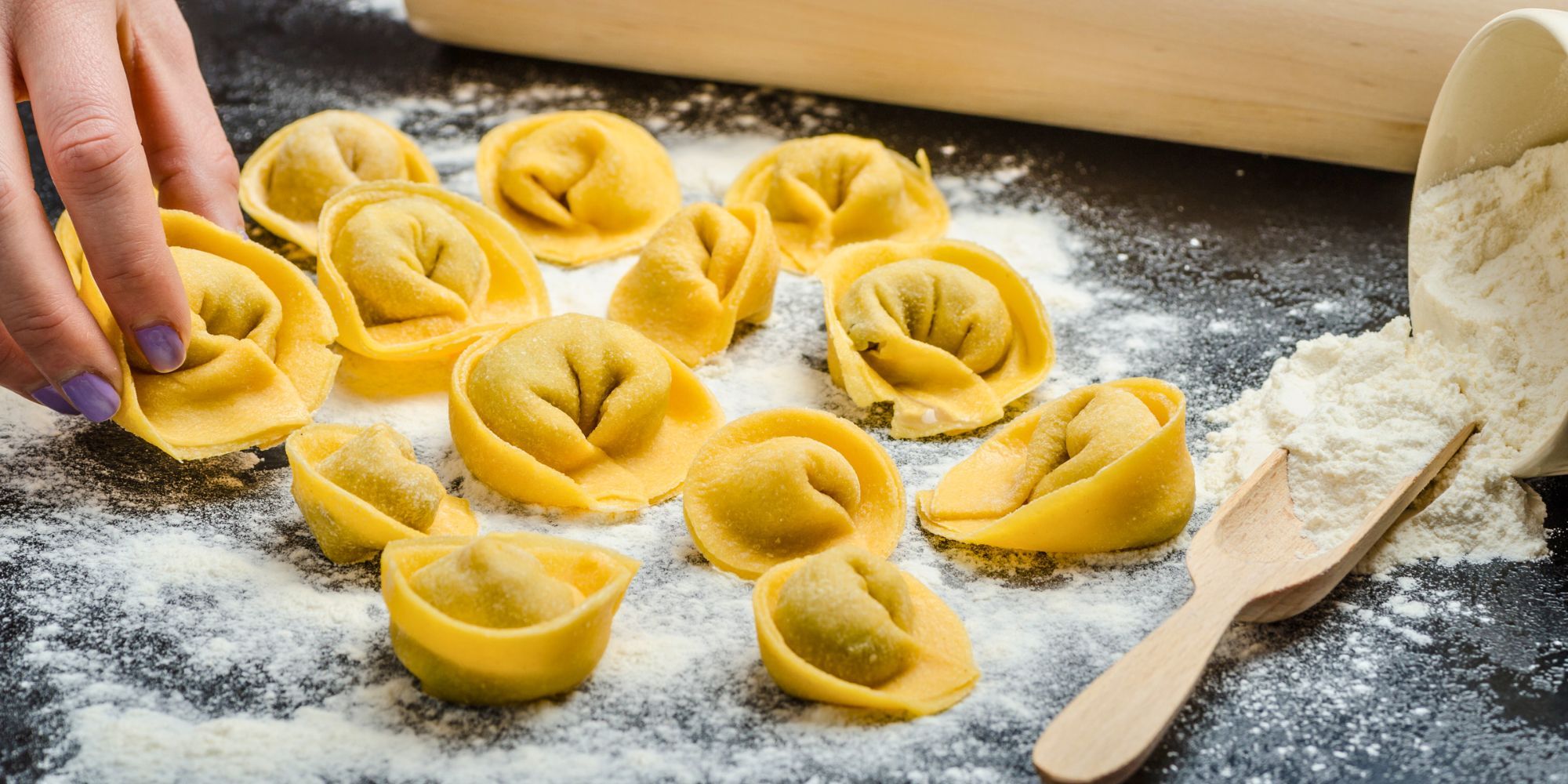
Tortellini
Throughout Italy, each region has its own fresh pasta specialties and shapes, reflecting local traditions and the use of regional ingredients.
While in the north you can discover delicious agnolotti or tortellini filled with meat, in the centre, homemade pasta is often accompanied by tomato-based sauces and pecorino romano. In the south, however, orecchiette and cavatelli are among the most popular variations. All these differences, area to area of Italy and from region to region of the boot, reflect the kaleidoscope of experiences that the country has gone through and lived, adapting centuries-old recipes to its own traditions.
Prepare your pasta in the authentic atmosphere of a home in FlorenceFresh pasta in the world
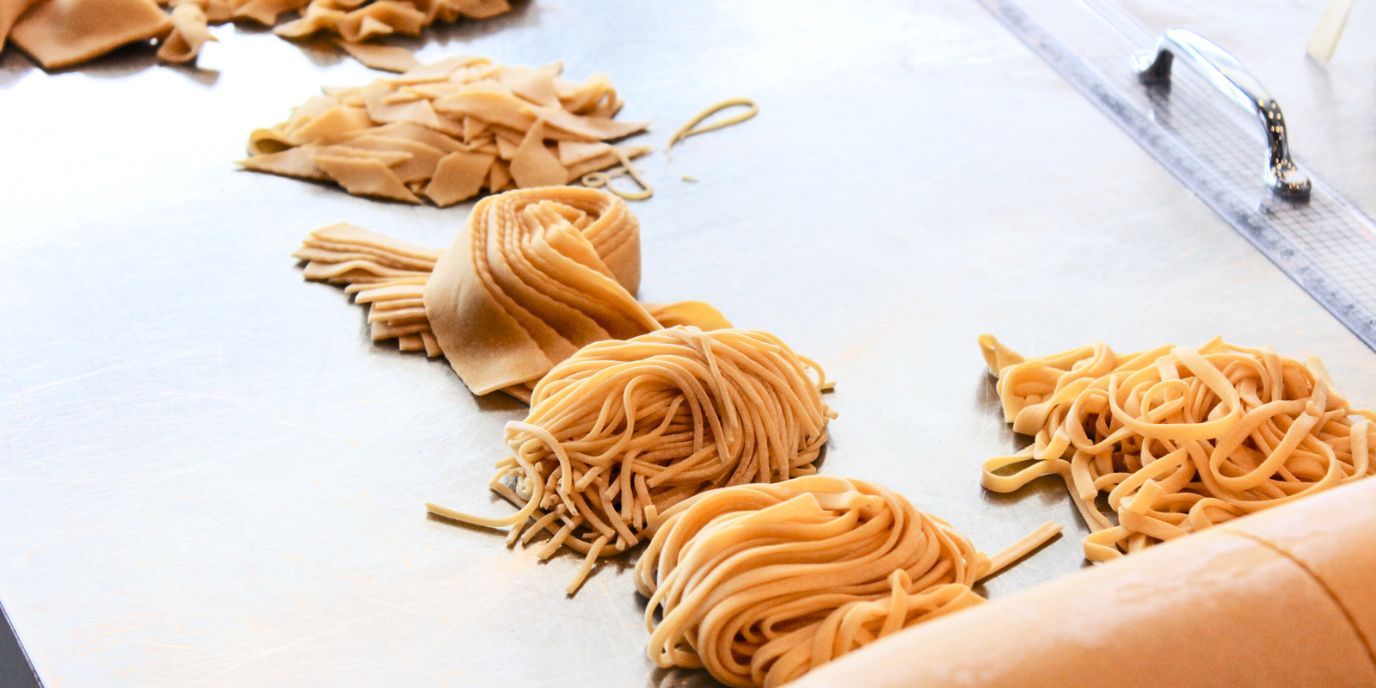
Fresh pasta in the world
Fresh Italian pasta has conquered the hearts of gastronomes from all over the world.
Italian restaurants, and not only, use and innovate the recipes of the ancient Italian pasta-making heritage, to rediscover the timeless flavor of fresh pasta. The pasta well enhances unique, unusual and traditional flavors.
The different shapes and textures of homemade pasta allow for a vast range of combinations with extraordinary sauces, condiments and ingredients, satisfying every type of palate.
A heritage to be preserved

The preparation of tortellini
Fresh Italian pasta is much more than an artisanal preparation. When we talk about fresh homemade pasta we are discussing a centuries-old culinary tradition, handed down from generation to generation.
Its artisanal preparation and the use of such simple ingredients make it the queen of Italian cuisine. On the other hand, you know, a plate of pasta is enough to be happier. Homemade pasta can also be one of those Italian recipes to prepare as a family.
Take a cooking class in the heart of MilanAbout the author
Written on 29/06/2023

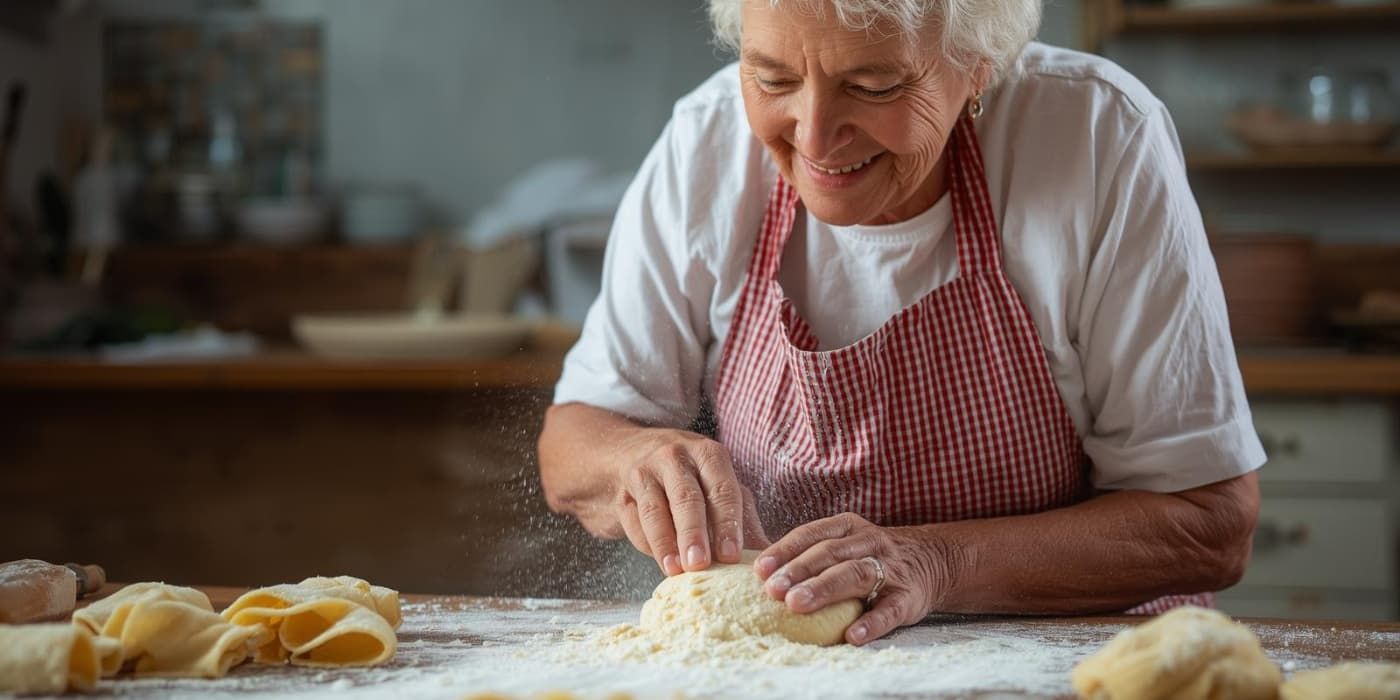

Teresa Borriello
Let's explore the history of fresh Italian pasta, among centuries-old recipes and traditions capable of spreading between generations, without limits.